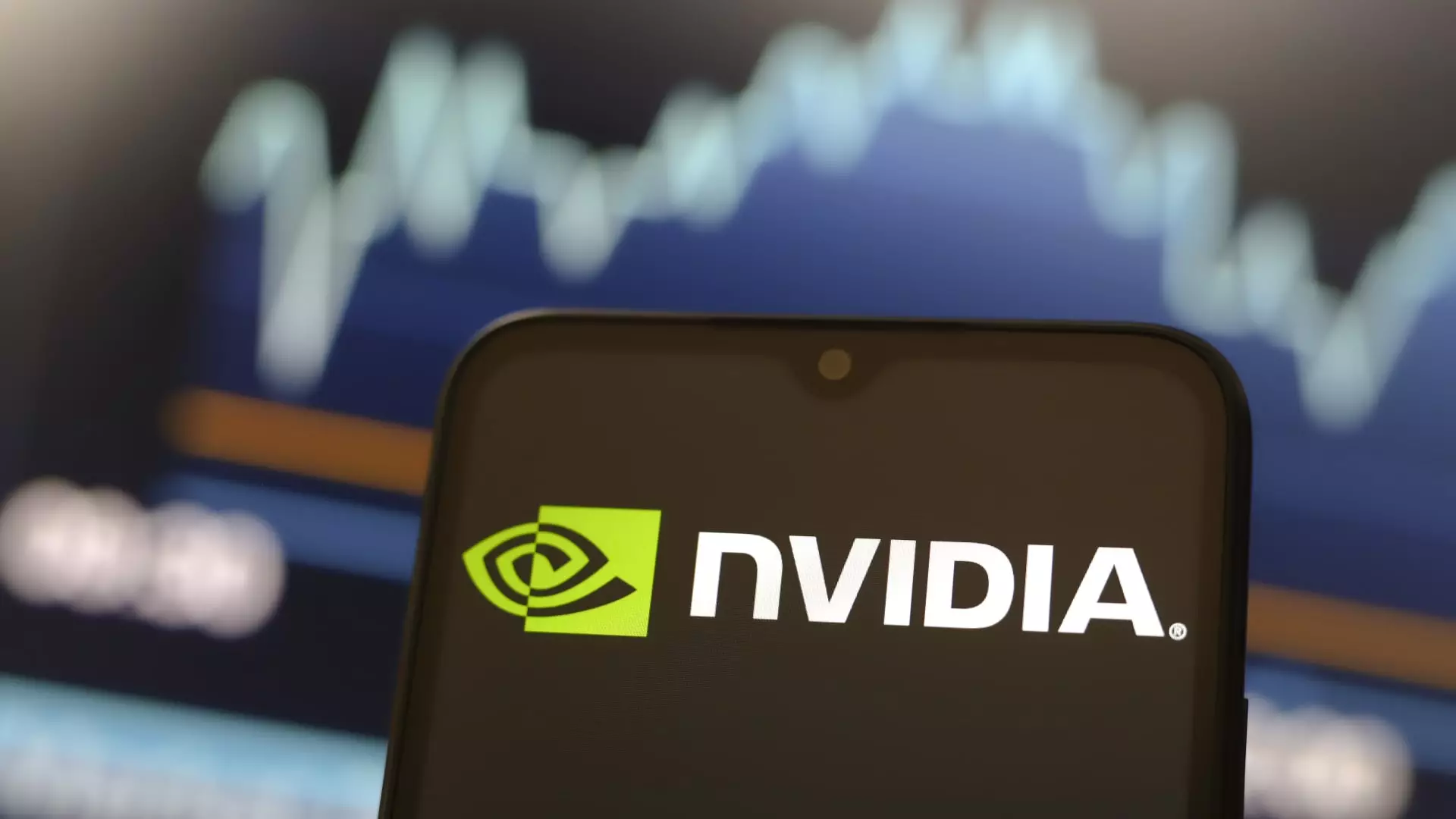The tech world has recently become a battleground for investors, particularly with Nvidia, the preeminent player in artificial intelligence (AI) chip manufacturing, experiencing a notable downturn in its stock price. While the Nasdaq Composite has reached unprecedented highs, Nvidia’s shares have landed in correction territory, sparking discussions about market sentiment, profit-taking, and broader industry trends.
Nvidia’s stock hit a decline of 11% from its peak, which stirred the interest of analysts and investors. Market corrections, typically defined as a drop of 10% or more from an all-time high, can illustrate investor sentiment and market dynamics at play. This particular downturn occurred despite a remarkable 166% increase in Nvidia’s stock price throughout the year, fueled by the buzz surrounding AI and its associated technologies. However, the recent 4.5% decline in December indicates that challenges may be bubbling beneath the surface, leading to apprehension among investors who are now recalibrating their strategies.
Hailing a dramatic event like this can be easy to misinterpret. Still, when combined with other indicators and market performances, it reveals deeper insights into how Nvidia fits into the broader market picture, which has been marked by fluctuating interests and profit-taking behavior.
Keith Lerner, co-chief investment officer at Truist, pointed out that the recent decline in Nvidia may reflect a broader appetite for profit-taking after a jubilant year. Investors tend to secure their gains when a stock has had a notable climb, and this behavior can manifest as cascading declines, particularly if there’s a perception that a peak has been reached. Moreover, Lerner emphasized the indispensable role of Nvidia’s chips in modern infrastructure, suggesting that while Nvidia remains a heavyweight, the landscape does not solely revolve around its offerings.
What’s crucial here is the notion of sector rotation. Often, investors will shift their focus to other stocks perceived to have faster growth prospects when a particular stock exhibits weakness. This trend is visible with Nvidia, as stocks like Broadcom surged to new heights, fueled by positive earnings reports and confidence from momentum investors seeking the next high-flyer.
In light of Nvidia’s struggles, we observe a resurgence in many of its semiconductor competitors. Companies like Micron Technology, Marvell Technology, and Lam Research have similarly thrived, capitalizing on Nvidia’s temporary setback. This paints a picture of a competitive landscape where momentum can fluctuate, causing ripples across different players in the semiconductor market. Broadcom encapsulated this shift by recognizing that its positive earnings message sparked a new wave of investor enthusiasm and diverted attention from Nvidia.
The question that arises is whether Nvidia can reclaim its momentum or if its declining stock serves as a harbinger of an upcoming storm. Analysts from Roth MKM identified a critical support zone between $125 to $130 that needs to hold for Nvidia; failing to do so may indicate further troubles not just for the company but for the market at large.
The divergence between Nvidia’s performance and the soaring Nasdaq Composite raises vital questions concerning future investment strategies. While Nvidia has undeniably played a leading role in the AI boom and garnered significant market capitalisation, continued scrutiny of its stock is necessary against the backdrop of a rapidly evolving technology landscape.
As companies continually push towards more advanced AI applications, other benefactors from the AI surge cannot be overlooked. The capabilities and advancements made by competitors may not only carve a slice of the market but may also redefine the balance of power within the technology sector.
Nvidia’s current position presents a multifaceted scenario rife with potential implications for investors and analysts alike. The interplay of profit-taking, sector rotation, competitive dynamics, and broader market sentiment suggests that while Nvidia may continue to be a key player in the AI chip arena, its journey ahead may require careful navigation amid shifting tides in the semiconductor industry. For stakeholders, this period of recalibration may open up new avenues for growth and a deeper understanding of market rhythms.

